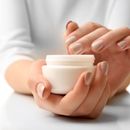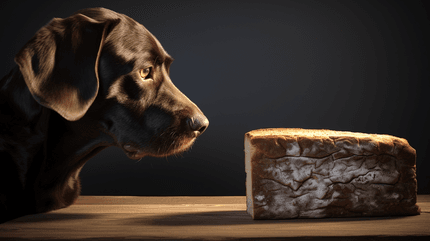The complexities and background of the MDR1 defect.
It is recognized in contemporary veterinary science that many canine health disorders are due to breed-specific diseases. One of the most notable such cases is the MDR1 defect, which manifests itself in affected dogs by multiple drug intolerance.
Genetic predisposition and breed risk
Mainly herding dog breeds such as Collies, Australian Shepherds and related breeds come to the forefront of the risk profile as they are disproportionately affected by this potentially life-threatening genetic defect. However, it should be noted that other breeds and mixed breeds are not immune to this defect, especially if there were carriers of this specific mutation in the ancestral line.
Understanding the MDR1 gene and its function
The acronym MDR1 stands for "multi-drug resistance gene." In cases where this gene is defective, multidrug resistance protein 1, also known as P-glycoprotein, is not produced. This protein plays a critical role in regulating the entry of foreign substances, including drugs, into the brain by reinforcing the blood-brain barrier and helping to remove and dispose of these substances.
Consequences of the lack of protein production
When this P-glycoprotein is absent due to the MDR1 defect, the barrier functions it normally provides are abolished. Toxic substances and drugs can thus enter the brain and other organs unimpeded and cause significant damage. Among the resulting effects, life-threatening symptoms can occur and, in the worst case, the affected dog could die.

What drugs and medicines are dangerous for these dogs.
The MDR1 defect can cause certain medications and drugs to become toxic to dogs. Here is a list of some medications that can cause problems in dogs with this genetic defect:
Macrocyclic lactones (including ivermectin and selamectin): these drugs are commonly used to treat heartworms and other parasites. However, they can cause severe neurological side effects in dogs with an MDR1 defect.
Imodium (loperamide): This medication is used to treat diarrhea. It can cause neurological side effects in dogs with an MDR1 defect.
Chemotherapy drugs (such as doxorubicin, vincristine, and vinblastine): these drugs are used to treat cancer. They may have increased side effects in dogs with an MDR1 defect.
Other medications such as acepromazine (a sedative) and butorphanol (a pain reliever): These can also cause side effects in dogs with MDR1 defects.
It is important to note that this is not an exhaustive list and sensitivity to these medications may vary from dog to dog. For dogs known to be MDR1 carriers, any medication administration should be discussed with a veterinarian to minimize potential risks.
The following medications or active substances must not be given to your dog under any circumstances if it suffers from the MDR1 defect:
- Ivermectin - is an active ingredient which is used against parasitic diseases (scabies, fleas, threadworms).
- Doramectin - is related to ivermectin and is also used as an antiparasitic.
- Moxidectin - this is also an antiparasitic against endo- and ectoparasites.
- Loperamide - is an opioid and is quite commonly prescribed for diarrhea.
So, for the most part, it is classic wormers that can be dangerous to the affected dog.
Critical agents for dogs with MDR1 defect
It is strongly advised that dogs suffering from the MDR1 defect should not be given certain drugs or agents under any circumstances.
Antiparasitic drugs and their risks
The active ingredient ivermectin, which is used to combat parasitic diseases such as scabies, fleas and threadworms, is one of the substances that should be avoided. The same is true of Doramectin, an active ingredient closely related to ivermectin, which serves as an antiparasitic. Another antiparasitic, moxidectin, which is effective against endo- and ectoparasites, should also not be used. It should be emphasized that these substances are typically included in common worming treatments, which can be problematic for dogs with MDR1 deficiency.
Loperamide, an opioid commonly prescribed for diarrhea, is also among the medications that should not be administered to these dogs.
In addition, many flea and antitick medications contain substances that are not safe for dogs with this specific genetic mutation.
Caution with surgery and drug treatments
Because there may be other agents and combinations of agents that can be dangerous to a dog with MDR1 deficiency, care should always be taken during surgeries and other drug treatments for the possibility of drug intolerance.
Alternative treatments for dogs with MDR1 deficiency.
Despite the challenges presented by the MDR1 defect, there are approved alternatives for affected dogs. For example, the antiparasitic agents Advocate, Stronghold and Milbemax have been found to be tolerated. Therefore, if the MDR1 gene defect is present in your dog, it is recommended that you ask your veterinarian for advice on the appropriate preparations.

Symptoms and diagnosis of the MDR1 defect: a precise view.
Dogs suffering from the MDR1 gene defect that have received the above-mentioned drugs usually show severe neurological symptoms. Typically, these manifest as neurological movement disorders, tremors and convulsions. In extreme cases, the dog's condition can progress to coma and, in the worst scenario, lead to death.
Reliable DNA tests are available for dog breeds identified as at-risk. These can definitively confirm or rule out the mutation. Interestingly, the test differentiates between three possible genotypes:
- Genotype N/N indicates that the dog is not a carrier of the mutation and therefore cannot pass it on to its offspring.
- Genotype N/MDR1 indicates a dog that is a carrier of a mutated gene, with the subsequent 50% probability of passing it on to its offspring. There is also a possibility of developing symptoms of intolerance.
- The MDR1/MDR1 genotype indicates a guaranteed inheritance of the mutation to the offspring. Such dogs are extremely sensitive to drug administration with the mentioned and other active substances.
Therapy and prevention of MDR1 defect: responsible measures
For prevention, early DNA testing is advisable in order to adjust therapy plans accordingly. With regard to breeding, it is essential to perform appropriate testing in breeds at risk. This is the only reliable preventive measure to exclude the transmission of this defect and to ensure the well-being of future generations.























